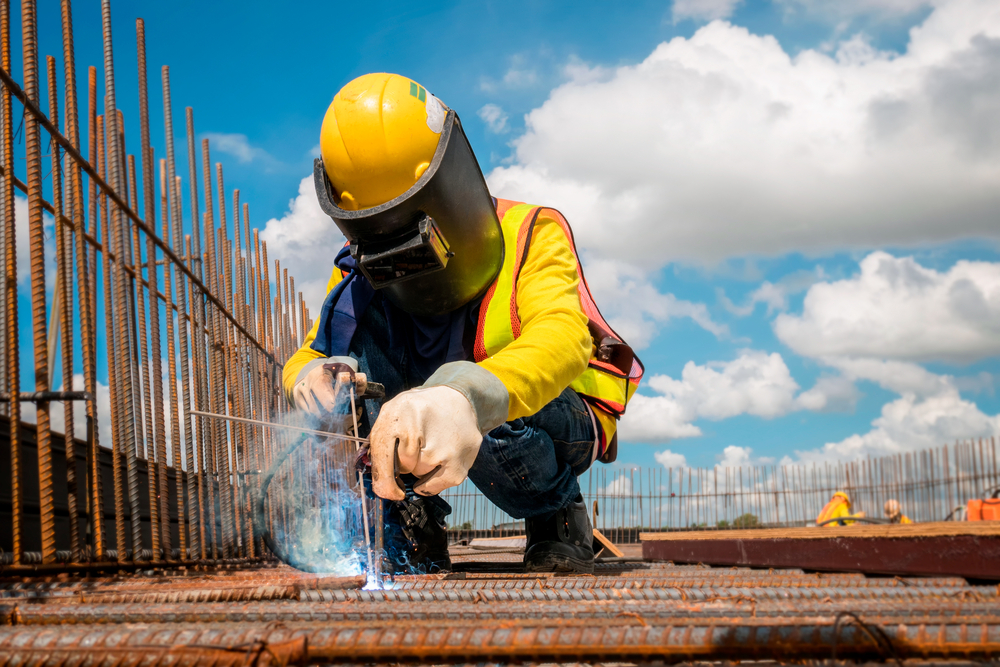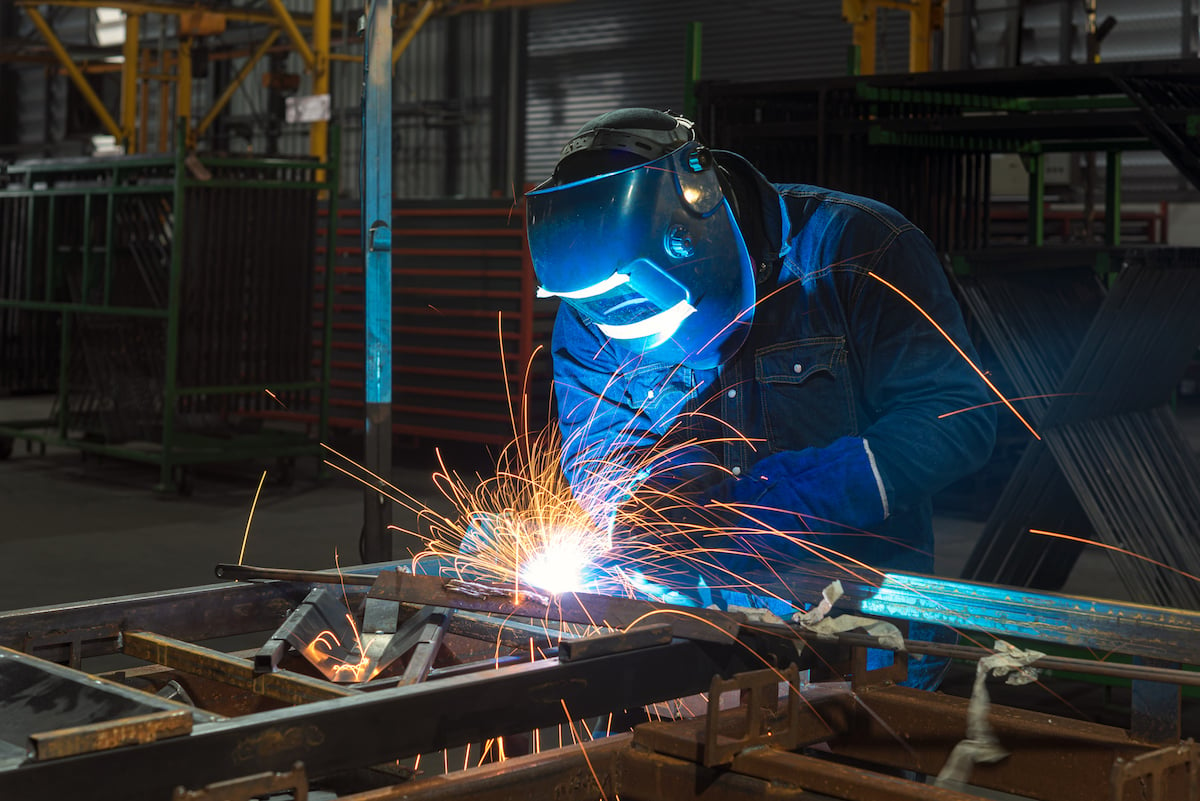Usual Welding Repair Issues and Just How to Address Them Successfully
Welding fixings frequently experience a series of concerns that can threaten the stability of the final product. Usual problems include inadequate infiltration, porosity, and misalignment, to name a few. Each issue presents distinct obstacles that need particular methods for resolution. Recognizing these problems is essential for welders aiming to enhance their skills and end results. This discussion will certainly discover these typical welding fixing concerns and effective methods to address them.
Poor Infiltration
Inadequate infiltration happens when the weld steel stops working to fully fuse with the base material, causing weak joints and potential structural failings. This concern usually stems from inadequate warm input, inaccurate electrode angle, or incorrect welding rate. Welders may run into poor infiltration because of a miscalculation of the needed criteria for a certain material density or type. In addition, contamination on the base product's surface area can hinder effective bonding, intensifying the trouble. To address insufficient penetration, welders need to assure proper settings on their tools and preserve a tidy job surface area. Normal inspection of welds is suggested to identify any type of deficiencies early, allowing for timely modifications and the avoidance of compromised structural stability in bonded settings up.
Porosity
Porosity is an usual issue in bonded joints that materializes as small gas bubbles trapped within the weld metal. This issue can endanger the stability of the weld, leading to reduced toughness and potential failure under anxiety. Montana Mobile Welding and Repair Fabrication. Porosity usually emerges from contamination, moisture, or inappropriate welding techniques, which permit gases to get away into the molten weld swimming pool. To deal with porosity, welders need to guarantee correct surface area prep work, keep a tidy workplace, and use suitable welding parameters. Additionally, picking the best filler material and protecting gas can alleviate gas entrapment. Regular evaluation and testing of welds can help identify porosity early, assuring timely corrective activities are taken, thereby protecting the quality and reliability of the bonded framework
Misalignment
Imbalance in welding can emerge from different elements, including inappropriate setup and thermal growth. Comprehending the source is necessary for efficient resolution. Several modification methods are available to realign elements and assure architectural stability.
Causes of Imbalance
Welding misalignment typically originates from a selection of underlying issues that can jeopardize structural integrity. One main reason is inappropriate fit-up of elements before welding, which can result in voids and irregular surfaces. Variations in thermal expansion throughout the welding process can also lead to distortion, specifically if the products being joined have various coefficients of expansion. Additionally, inadequate securing and fixturing may stop working to hold components firmly in location, leading to activity during welding. Inadequately maintained tools, including welding machines and tools, may introduce variances in the weld grain, more adding to imbalance. Ultimately, operator mistake, stemming from insufficient training or experience, can additionally play a considerable function in developing misaligned welds.
Modification Techniques Readily Available
Addressing imbalance effectively needs a mix of restorative methods customized to the certain issues at hand. One common approach is using jigs or components to hold parts in the appropriate setting throughout welding, making sure constant alignment. Furthermore, preheating the materials can help decrease distortion and boost fit-up. For significant misalignment, mechanical realignment strategies, such as making use of hydraulic jacks or clamps, can be used to remedy the setting prior to welding. Post-weld warm therapy might likewise be essential to alleviate stress and anxieties brought on by imbalance. Mindful inspection and modification during the setup stage can avoid imbalance issues from becoming considerable troubles, advertising a smoother welding procedure and enhancing general architectural honesty.
Distortion
Distortion is an usual obstacle in welding that can occur from various aspects, consisting of irregular heating & cooling. Understanding the reasons of distortion is vital for implementing effective avoidance methods. Resolving this problem not only improves structural honesty however likewise improves the general top quality of the weld.
Root causes of Distortion
When subjected to the intense heat of welding, materials typically go through changes that can bring about distortion. This sensation primarily emerges from thermal development and tightening during the welding procedure. As the weld location warms up, the material broadens; upon air conditioning, it acquires, which can create internal stress and anxieties. On top of that, irregular heating across a workpiece can aggravate welders near me these stress and anxieties, resulting in bending or bending. The sort of material likewise plays a considerable duty; metals with differing thermal conductivity and coefficients of development may respond differently, bring about unforeseeable distortions. Additionally, inadequate joint design and poor fixturing can contribute to misalignment throughout welding, enhancing the chance of distortion. Comprehending these reasons is vital for effective welding fixing and prevention approaches.
Avoidance Techniques
Reliable avoidance strategies for distortion during welding emphasis on controlling warmth input and making sure appropriate joint layout. Preserving a consistent heat input assists to reduce thermal development and tightening, which can bring about distortion. Utilizing strategies such as preheating the workpiece can likewise reduce the temperature level gradient, promoting consistent home heating. Furthermore, choosing suitable joint styles, such as T-joints or lap joints, can boost security and lower stress and anxiety concentrations. Applying proper fixturing to safeguard the workpieces in location additionally aids in keeping positioning throughout the welding process. Staggered welding sequences can disperse warm a lot more equally, avoiding localized distortion. By applying these methods, welders can greatly lower the probability of distortion and enhance the overall high quality of their welds.
Cracking
Breaking is an usual problem experienced in welding fixings, frequently resulting from numerous variables such as improper air conditioning rates, material option, or poor joint prep work. The event of splits can greatly endanger the integrity of the weld, resulting in prospective failings during procedure. To resolve this issue, welders need to initially analyze the origin creates, making sure that materials work and suitably picked for the details application. Furthermore, managing the cooling price throughout the welding process is vital; fast cooling can generate stress and lead to splitting. Correct joint layout and preparation likewise add to minimizing the risk. Executing these methods can boost weld quality and durability, eventually minimizing the chance of breaking in finished weldments.

Insufficient Fusion
A substantial problem in welding repairs is insufficient blend, which happens when the weld metal does not sufficiently bond with the base material or previous weld passes - Montana Mobile Welding and Repair Welding. This problem can result in weak points in the joint, potentially compromising the integrity of the welded structure. Variables adding to incomplete blend consist of insufficient warm input, inappropriate welding strategy, and contamination of the surfaces being signed up browse this site with. To resolve this problem effectively, welders should guarantee proper pre-weld cleaning and surface area preparation, as well as adjust this hyperlink their welding specifications to achieve adequate penetration and fusion. Regular examination during the welding process can likewise help identify insufficient combination early, enabling timely corrective steps to improve the general quality of the weld
Overheating
While welding repair services can enhance structural stability, overheating offers a substantial obstacle that can bring about material deterioration. Too much heat throughout welding can alter the mechanical residential properties of metals, resulting in minimized stamina, raised brittleness, and bending. This phenomenon is particularly important in high-stress applications where architectural reliability is extremely important. Identifying getting too hot can involve visual evaluations for discoloration or distortion, along with checking temperature during the welding process. To alleviate the dangers related to getting too hot, welders must use suitable techniques, such as regulating heat input, changing travel rate, and using suitable filler products. Furthermore, implementing pre- and post-weld warm treatments can aid restore product residential or commercial properties and improve the total high quality of the repair, making certain lasting performance and safety.
Often Asked Inquiries
What Are the Common Indicators of a Welding Flaw?

How Can I Check My Welds for High quality?
To evaluate welds for high quality, one can utilize visual examinations, ultrasonic screening, and radiographic techniques. Each method assures architectural integrity, determines issues, and validates adherence to defined standards, inevitably boosting the dependability of the welded joints.
What Safety and security Preventative Measures Should I Take While Welding?
When welding, one must focus on safety and security by using ideal personal safety equipment, making sure correct ventilation, securing flammable products away, maintaining a tidy work area, and recognizing surroundings to stop injuries and mishaps.
Can I Fix a Weld Without Renovating the Entire Joint?
Repairing a weld without redoing the entire joint is possible, relying on the damage (Montana Mobile Welding and Repair Belgrade). Methods such as grinding, including filler product, or utilizing a welding process can efficiently deal with details flaws while preserving the bordering structure
What Equipment Are Vital for Efficient Welding Fixes?
Essential tools for reliable welding repair work consist of a welding maker, cord brush, mill, safety equipment, clamps, and filler materials. Each device plays an essential role in making certain quality and safety and security throughout the repair process. Porosity commonly arises from contamination, moisture, or improper welding techniques, which permit gases to run away right into the liquified weld pool. Inadequately maintained devices, including welding equipments and devices, may present disparities in the weld bead, further contributing to misalignment. When subjected to the intense warm of welding, products frequently undergo modifications that can lead to distortion. Fracturing is a typical issue encountered in welding fixings, often resulting from numerous factors such as improper air conditioning rates, product choice, or inadequate joint preparation. A considerable concern in welding fixings is insufficient fusion, which happens when the weld metal does not effectively bond with the base product or previous weld passes.